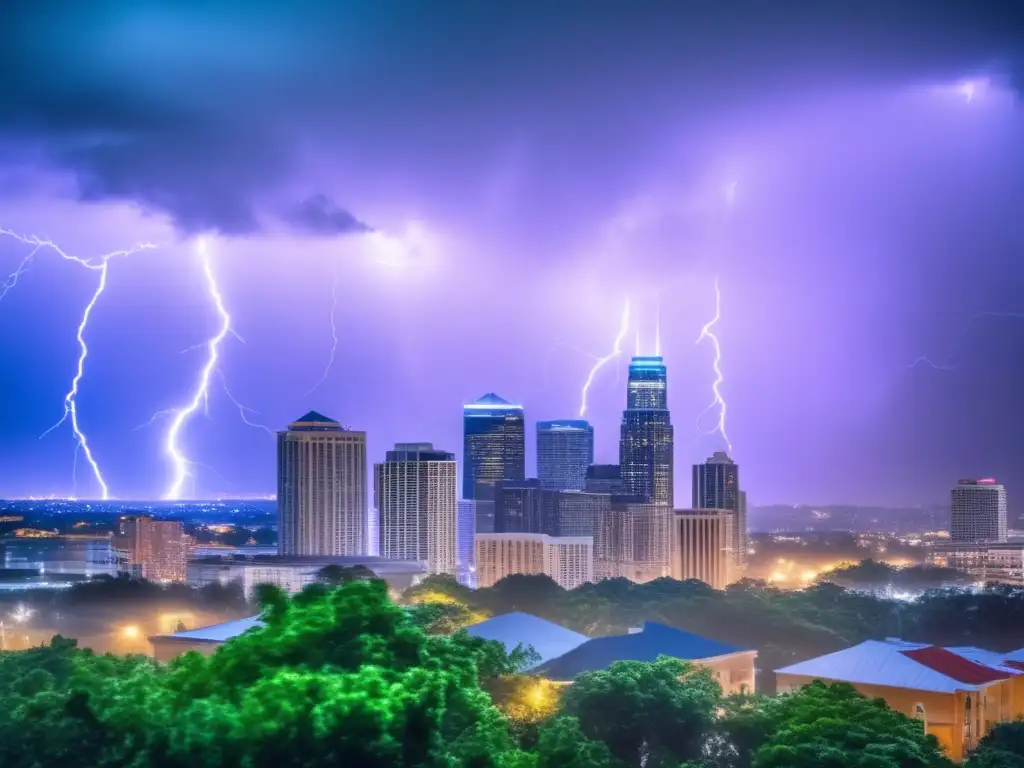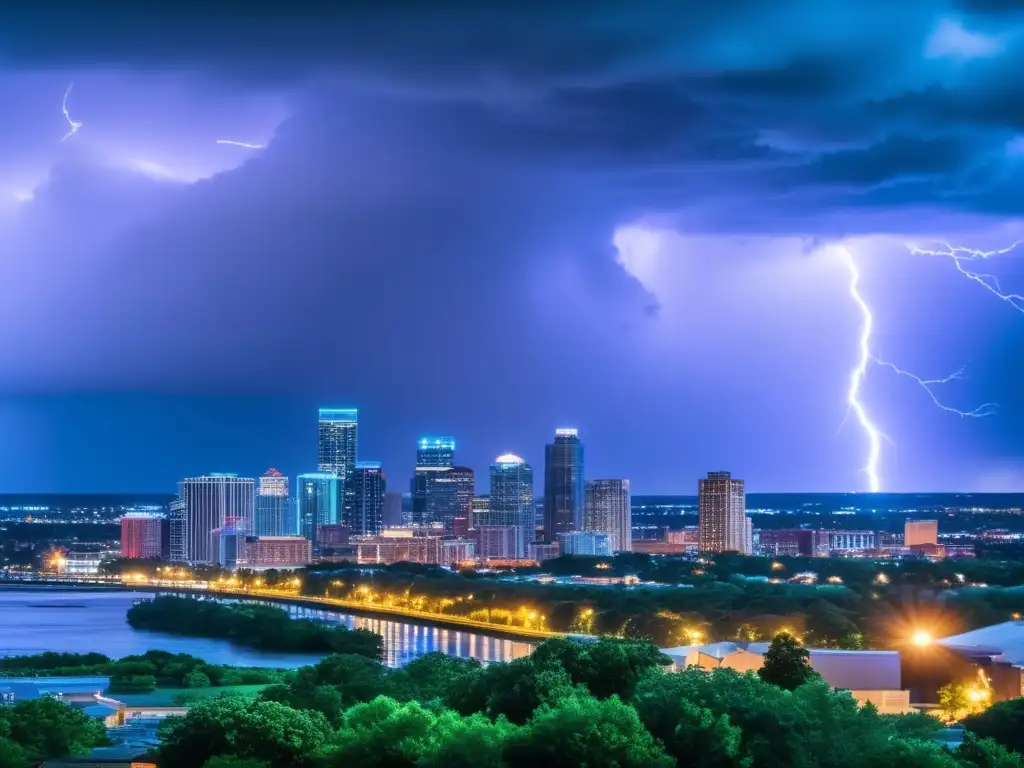An Examination Of Urban Planning For Hurricane Resilience

An Examination of Urban Planning for Hurricane Resilience
Introduction
Hurricanes have the potential to cause catastrophic damage, and it is necessary for communities in hurricane-prone areas to prepare for such events. One aspect of preparation that is often overlooked is urban planning for hurricane resilience. Urban planning can play a significant role in mitigating the impact of hurricanes by developing smartly designed infrastructure that can resist the force of the storm and provide safety for people. This article will examine the importance of urban planning for hurricane resilience, its challenges, and the initiatives taken to overcome them.
The Importance of Urban Planning for Hurricane Resilience

Building Code Standards
One of the primary ways urban planning can help hurricane resilience is by implementing building code standards that prioritize structural integrity. Buildings that are well-designed can withstand the impact of high winds and heavy rains that come with hurricanes. Therefore, building codes should be updated to reflect local hazards. For instance, if an area experiences heavy rainfall during hurricanes, buildings must have better drainage systems and roof designs. Proper community planning can ensure that all new structures meet appropriate building codes and existing structures are retrofitted accordingly.
Infrastructure Resiliency
Aside from building codes, infrastructure resiliency is also critical. The onset of a hurricane can result in flooding, power outages, and other severe impacts. In areas where hurricanes tend to hit frequently, infrastructures like power lines, water and sewer systems, and communication networks must be built to withstand extreme conditions. Grid hardscaping and underground energy/electricity lines are a few examples of disaster-resilient infrastructure design. Measures should also be taken to ensure that evacuation routes, shelters, and emergency responders are adequately prepared to handle the event.
Collaboration between Communities and City Planners
When it comes to urban planning for hurricane resilience, collaboration between communities and city planners has a significant role to play. Community-led planning takes into account the unique needs and characteristics of local neighborhoods, which helps in better preparation for emergencies such as hurricanes. The residents and leaders should engage with city planners to ensure that their voices are heard and that the plan is tailored to their specific needs. Community input cannot be ignored since they often know features that make their locality unique and solutions to those problems.
Challenges in Implementing Urban Planning for Hurricane Resilience

The Cost of Implementation
Implementing urban planning for hurricane resilience can be costly, making it difficult for communities and cities to invest in such efforts. Upgrading building codes and retrofitting existing buildings can be expensive, and organizations must allocate sufficient resources to do so. Additionally, developing disaster-resilient infrastructure may require more investment than conventional infrastructures. Governments may need to create tax incentives or grants to incentivize developers and property owners to retrofit buildings and invest in sustainable and disaster-resilient infrastructures. Collaboration between public-private partnerships and international funding organizations like the UN, European Union, etc., could also provide funding for the cost of infrastructure resiliency investments.
Enforcement and Compliance
Another challenge for implementing urban planning for hurricane resilience is enforcement and compliance. Some developers might be hesitant on retrofitting buildings according to code standards since they may view them as too restrictive, costly, or unnecessary. To address this, governments develop inspection and compliance committees to ensure that new construction and retrofitting comply with building codes. There should be severe penalties implemented for developers, contractors, and building owners who violate the codes. Furthermore, there should be mechanisms that ensure that local communities have a say in the planning process and participate actively in maintaining compliance to set standards.
Initiatives Taken to Overcome Challenges

Promoting Green Infrastructure
Green infrastructure is an innovative approach to managing stormwater runoff while also providing environmental, social, and economic benefits. Examples of green infrastructure include rain gardens, bioswales, and permeable pavement surfaces. Those features allow water to seep into the ground instead of overloading the existing sewer systems. Green infrastructure also provides added benefits like reducing heat islands and improving air quality, making cities overall healthy. The benefits of green infrastructure will aid in promoting healthy living and sustainable economic development.
Large-Scale Regional Planning
Urban planning is not only to build structures but also to ensure planning for the whole city or town's wellbeing. Large-scale planning can create comprehensive strategies to help mitigate hurricane impacts. Regions share common vulnerabilities to hurricanes, and collective, coordinated efforts could help prepare better for natural disasters. Examples of large-scale planning include planning for shared emergency management systems and regional evacuation plans that take into consideration all affected areas' population density and transportation accessibility. Collaborative action among neighboring towns and cities is critical in ensuring that the whole region is well-prepared for natural disasters.
Frequently Asked Questions

-
What is urban planning for hurricane resilience?
Urban planning for hurricane resilience is an approach to develop smartly designed infrastructure that can withstand the force of hurricanes, mitigate their impact, and provide safety for people living in hurricane-prone areas.
-
Why is urban planning for hurricane resilience important?
It helps reduce the impact of hurricanes on infrastructure and human life. It also helps prevent loss of property, business, and economic resources.
-
What are the challenges of implementing urban planning for hurricane resilience?
The cost of implementation and enforcement and compliance in adhering to building codes and standards.
-
What initiatives have been taken to overcome these challenges?
Promoting green infrastructure, large-scale regional planning, tax incentives or grant funding, collaborations between public-private partnerships and international funding organizations like the UN, EU, etc., and creating inspection and compliance committees.
-
How can community participation help?
Community input can help to tailor urban planning to their needs effectively, thus helping to create a more resilient city that can withstand natural disasters like hurricanes.
Conclusion
In conclusion, urban planning for hurricane resilience involves the development of smartly designed infrastructure and building code standards that can withstand the force of hurricanes, mitigate their impact, and provide safety for people living in hurricane-prone areas. While there are challenges in implementing urban planning for hurricane resilience, the benefits outweigh the costs. By working together, communities, city planners, governments, and international organizations can make progress towards developing resilient cities and towns that can withstand natural disasters like hurricanes.
If you live in hurricane-prone areas, it's essential to stay informed about local emergency management rules and regulations and be prepared for hurricane season. Share this article with your family and friends, and feel free to leave comments below with your thoughts, ideas, and experiences. For more information and resources, visit hurricaneinsider.org, a specialized website dedicated to providing comprehensive information on hurricanes.
Additional Resources

- National Hurricane Center
- Federal Emergency Management Agency (FEMA)
- Ready.gov - Hurricanes
- Green Infrastructure - Environmental Protection Agency
 Building A Hurricane-Resistant Home: Principles And Materials
Building A Hurricane-Resistant Home: Principles And Materials Hurricanes Through The Decades: A Changing Landscape
Hurricanes Through The Decades: A Changing Landscape A Closer Look At Hurricane Doppler Radar
A Closer Look At Hurricane Doppler RadarIf you want to discover more articles similar to An Examination Of Urban Planning For Hurricane Resilience, you can visit the Basic knowledge about hurricanes: category.
Leave a Reply

Articulos relacionados: